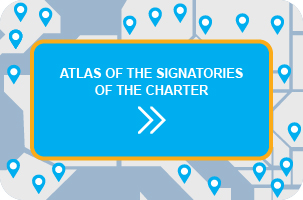Project to promote work-life balance
The pilot project on Work Life Balance was launched in 2008 by the Woman’s Institute and with the participation of the Spanish (FEMP) and the Norwegian (KS) Associations. The project was financially supported by the European Economic Area (EEA).
The aim of this project was to improve local public policies and achieve more and better work-life balance conditions for citizens by designing and implementing work-life plans in 10 Spanish municipalities.
Based on this, in 2010 a good practice guide on work-life balance for local bodies was published, collecting and analyzing best practices from Spanish and Norwegian municipalities. The collaboration between Norway and Spain turned out very successful and allowed for an exchange of best practices in both countries.
The recommendations provided in the work- life- balance guide were the following:
- Establishment of cross-cutting interventions in public policies to take into account the aspects of personal, professional and domestic life.
- Implementation of activities focusing on companies and the private sector promoting the idea that reconciliation of time is linked to productivity (awareness-raising, promotion of flexible working hours, working from home)
- Implementation of activities within the local administration focusing on their role as employers (to fight against internal discriminations and promoting a culture of independence and confidence among employees)
- Establishment of time policies in urban planning
- Implementation of actions to promote services and infrastructures that facilitate reconciliation of time (extended opening hours, low-cost access, multimodal transport-hubs)
- Implementation of raising-awareness activities promoting a change in attitudes regarding time issues (education policy, advocacy and shared responsibility of domestic tasks).
Today the Equilibrio-Balance project is extended for the period 2013-2015 building upon the experiences from the previous project. It involves fifteen Spanish local authorities (Madrid*, Majadahonda*, Almería, Cádiz, Jaén, Candeleda, Torrepacheco, Cambre, Verín, Vilagarcia de Arousa, Barakaldo*, Mérida, Pedro Muñoz, Cabezón de la Sal et Ibiza*) and two Norweigan municipalities (Kristiansand* et Hamar).
*Municipalities having signed the European Charter for Equality of women and men in local life
Questions to Maria Segura – Project Manager for the project “Equilibrio-Balance” at FEMP and Marit Tovsen Senior Advisor at KS
What were the main reasons for initiating this collaboration between the Norwegian association (KS) and Spanish association (FEMP)?
Spain and Norway are very different countries, but have a lot to learn from each other when it comes to gender equality. In Spain Gender equality has developed relatively fast – and Spain has achieved good results when it comes to key issues like gender based violence. The development in Norway has been going on for a longer period and has led to good results in many areas, for instance work-life balance.
Why did you choose to focus on “work-life-balance” as the main topic of this project?
During the last decades, policies aiming to provide equal opportunities between women and men and to guarantee formal and effective gender equality have been noticeably intensified, both at European and national level.
The reconciliation among personal, family and professional life is a need closely related to a new social, economic and labour reality in modern Europe. It can be seen as one of the key elements within the general framework of equal opportunities between women and men, and it should be tacked through a wide range of approaches.
For Spain, work life balance is a key challenge, as Spain is one of the countries that combine a relatively low participation of women in the labour market with a relatively low birth rate.
Norway has achieved a high percentage of women in a labour market as well as a relatively high birth rate – which indicates a better work life balance.
Could you describe the links between “work-life-balance” and gender equality and why it is important?
It is important for all persons to be able to combine work and personal life. In addition, women as well as men should have the right to combine work and children– if they wish to do so.
To take into consideration measures to promote work-life balance also means enhancing the real and effective equality between women and men by consolidating a model of coexistence in which there is a sharing of family responsibilities that contribute to breaking down the barriers that have prevented to combine and develop work and family life on equal terms.
Furthermore, work life balance is a key factor for social and economic development as it allows full use of all human resources and incorporation of the contributions of women and men by increasing the efficiency and productivity of enterprises and society.
Do you link the activities in this project to other activities related to gender equality made by municipalities?
It wouldn’t have been possible to develop this project without the firm commitment of the municipalities. As the closest level to social reality, municipalities are the best level of governance to fight against inequalities and promote effective gender equality policies.
In this sense, the municipalities involved in the project have a great experience in equality policies which makes the exchange of information and good practices in itself one of the aims to achieve.
Can you provide some examples of good practices?
Regarding the pilot project, best practices have been collected in a guide. Actually, we are working on the detection of new initiatives referring the new objectives.
Landmarks
In Spain, in 2013, 53% of women were in paid work (compared with 64% of men)[1] and 26.3% of them worked part-time (compared with 8% of working men)[2].
In Norway, in 2013, 73% of women are in paid work (compared to 77% of men)[3]. However, 40% of women in the labor force work part-time compared with only 10% of men.
Concerning the nativity, in Spain in 2012, the birth rate (i.e. the number of births compared to the whole population) was 9.7‰[4] and the fertility rate (i.e. the number of children by women) was 1.3[5].
In Norway in 2012, the birth rate was 12.0‰[6] and the fertility rate was of 1.9[7].
In the EU (28) in 2012 the birth rate was 10.4‰ in 2012 and the fertility rate was 1.59
[1] OECDE Better Life Index, OECD : http://www.oecdbetterlifeindex.org/countries/spain/
[2] Instituto Nacional de Estatisticas
[3] OECDE Better Life Index, OECD : http://www.oecdbetterlifeindex.org/countries/spain/
[4] Eurostat: http://epp.eurostat.ec.europa.eu/tgm/table.do?tab=table&plugin=1&language=en&pcode=tps00112
[5] World Bank data : http://datos.bancomundial.org/indicador/SP.DYN.TFRT.IN
[6] Eurostat: http://epp.eurostat.ec.europa.eu/tgm/table.do?tab=table&plugin=1&language=en&pcode=tps00112
[7] World Bank data : http://datos.bancomundial.org/indicador/SP.DYN.TFRT.IN













